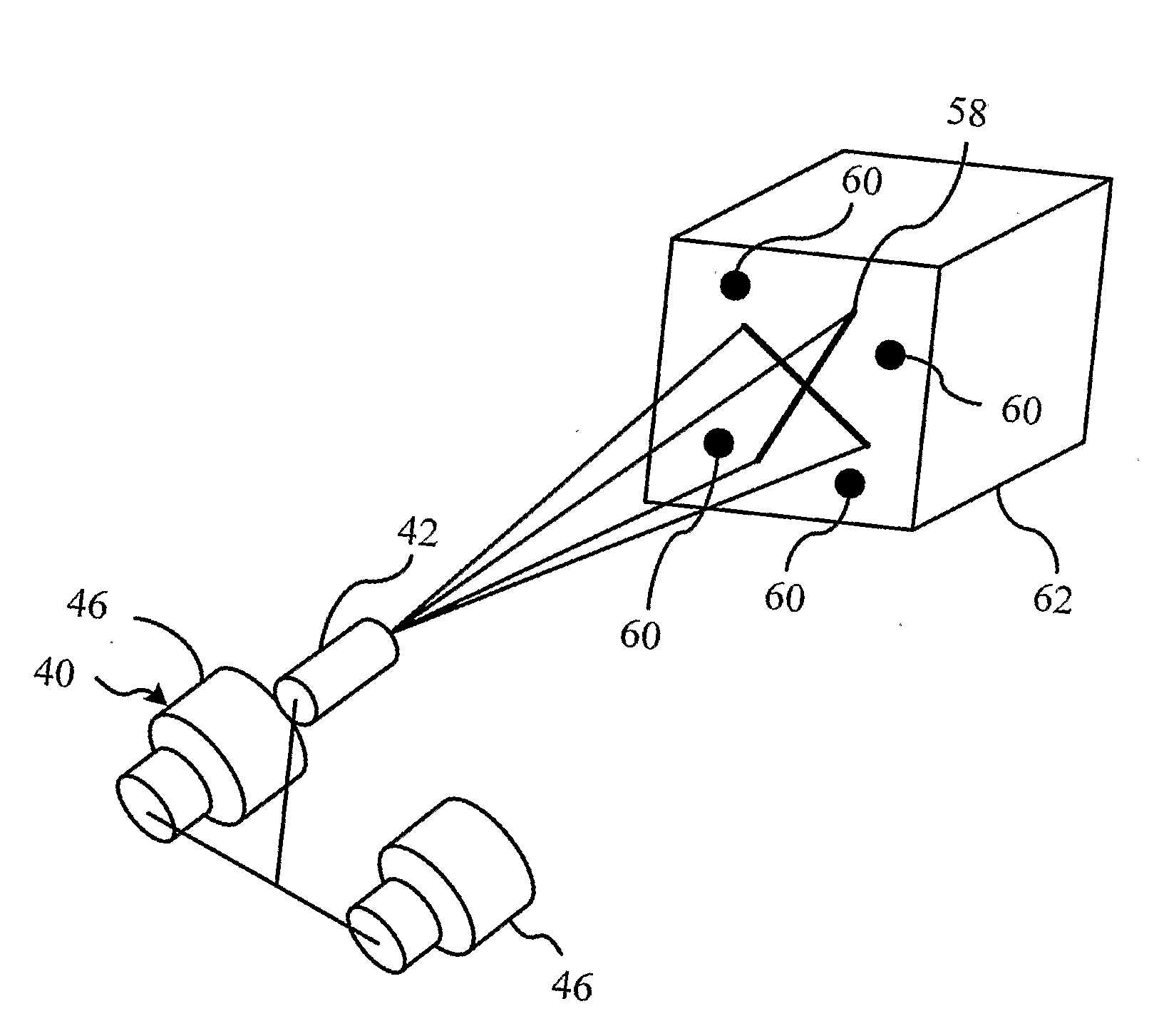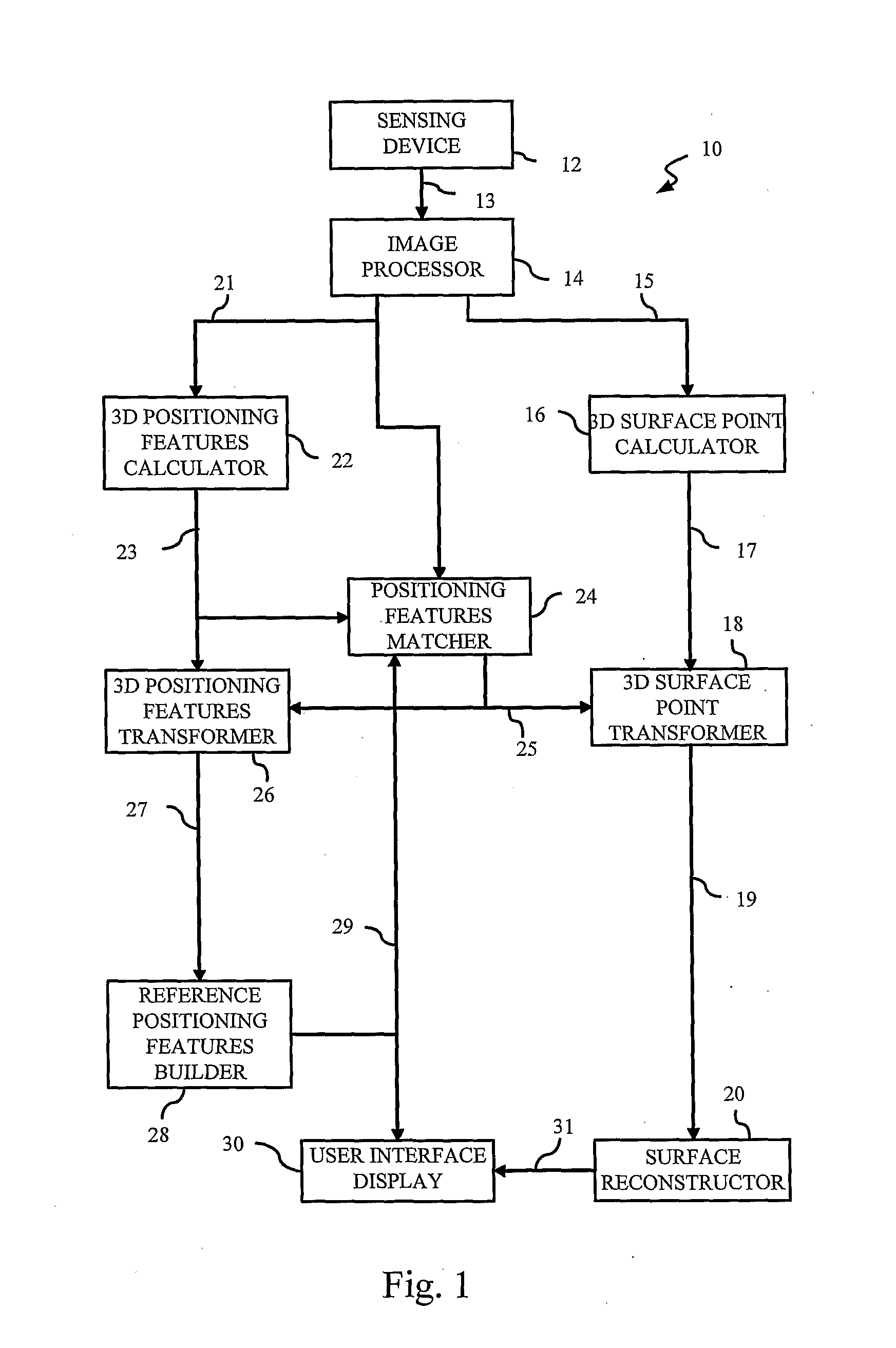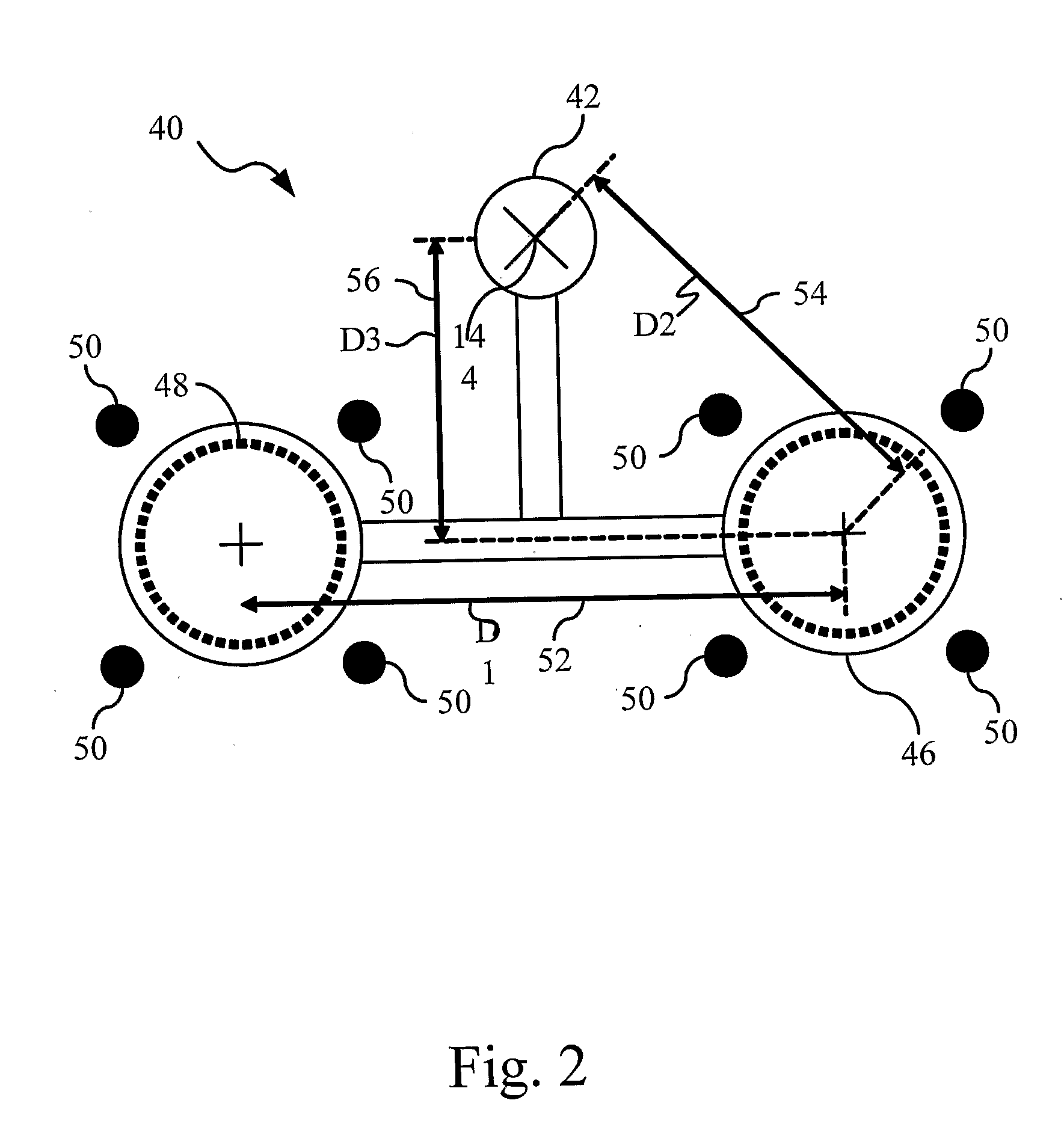Auto-Referenced System and Apparatus for Three-Dimensional Scanning
a three-dimensional scanning and reference system technology, applied in the field of three-dimensional scanning, can solve the problems of limiting the quality of integrated data, subject to speckle noise, and using positioning devices that significantly increase the complexity and cost of the apparatus,
- Summary
- Abstract
- Description
- Claims
- Application Information
AI Technical Summary
Benefits of technology
Problems solved by technology
Method used
Image
Examples
Embodiment Construction
[0027]Referring to FIG. 1, the 3D surface scanning system is generally shown at 10.
[0028]Sensing Device
[0029]The system comprises a sensing device 12 described in more details thereafter in this description. The sensing device 12 collects and transmits a set of images 13, namely a frame, of the observed scene to an image processor 14. These images are collected from at least two viewpoints where each of these viewpoints has its own center of projection. The relevant information encompassed in the images results from the laser projection pattern reflected on the object's surface as well as positioning features that are used to calculate the relative position of the sensing device with respect to other frame captures. Since all images in a given frame, are captured simultaneously and contain both positioning and surface measurements, synchronisation of positioning and surface measurement is implicit.
[0030]The positioning features are secured on the object such that the object can be m...
PUM
 Login to View More
Login to View More Abstract
Description
Claims
Application Information
 Login to View More
Login to View More - R&D
- Intellectual Property
- Life Sciences
- Materials
- Tech Scout
- Unparalleled Data Quality
- Higher Quality Content
- 60% Fewer Hallucinations
Browse by: Latest US Patents, China's latest patents, Technical Efficacy Thesaurus, Application Domain, Technology Topic, Popular Technical Reports.
© 2025 PatSnap. All rights reserved.Legal|Privacy policy|Modern Slavery Act Transparency Statement|Sitemap|About US| Contact US: help@patsnap.com



